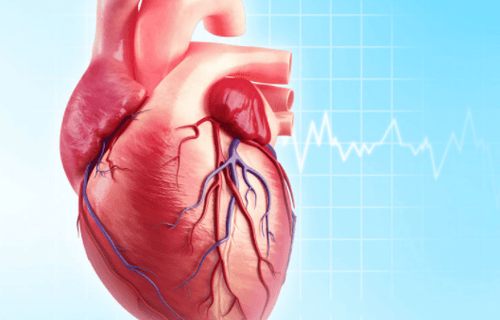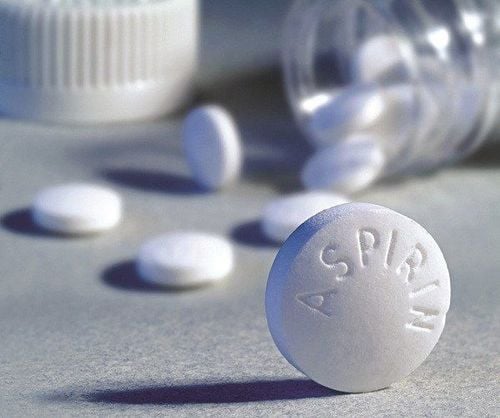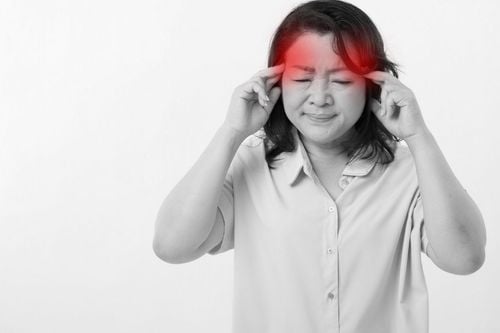This is an automatically translated article.
Mortality rate due to cerebrovascular accident is often high and the sequelae are often severe, greatly affecting working health and life not only for the patient but also for the family and society. Therefore, hand rehabilitation for patients with hemiplegia is very important. The following article helps the patient's family with hand and hand exercise techniques for hemiplegic patients.
1. Rehabilitation concept and principles in rehabilitation for patients with hemiplegia
Hemiplegia or stroke are terms used to describe sudden loss of function on the left or right side of the body due to damage to the cerebral arteries. A stroke is a medical emergency that requires immediate care. The goals of rehabilitation are to optimize how a person functions after a stroke and level of independence, while achieving the best possible quality of life.
Advances in emergency stroke treatment can limit brain damage, which occurs due to bleeding in and around the brain (hemorrhagic stroke) or due to lack of blood flow to the area where nerve cells are located. deprived of vital supplies of oxygen and nutrients and subsequently died (ischemic stroke).
The disability experienced by a person with a stroke and the rehabilitation needed depends on the size of the brain injury and the specific brain circuits damaged. The brain has an intrinsic ability to rewind its vessels after a stroke, leading to some degree of improved function over months to years. While rehabilitation does not reverse brain damage, it can essentially help stroke survivors achieve the best long-term outcomes.
Rehabilitation helps stroke survivors relearn skills suddenly lost when part of the brain is damaged. Equally important in rehabilitation is protecting the individual from developing new medical problems, including pneumonia, urinary tract infections, injuries from falls, or the formation of blood clots in the veins. big.
Research shows that the most important element in any neurological rehabilitation program is careful instruction, good focus, repetitive practice — the same kind of practice that is enjoyed by everyone use when they learn a new skill, such as playing the piano or throwing a baseball. The neurological rehabilitation program must be customized to practice skills impaired by a stroke, such as weakness, poor coordination, difficulty walking, loss of sensation, problems with hand grip, loss of vision or difficulty speaking or understanding. Research using state-of-the-art imaging technology shows that functions previously located in damaged areas migrate to other brain regions, and the practice promotes the rewiring of brain circuits (known as plasticity). nerve toughness).
Rehabilitation also teaches new ways to compensate for residual disabilities. For example, a person may need to learn how to shower and dress with only one hand or how to communicate effectively with assistive devices if language ability is affected.
Of the disabilities left by a stroke, paralysis and loss of voluntary motor control or weakness usually affect one side of the body, usually the side opposite to the side damaged by the stroke. stroke (such as the face, an arm, a leg, or an entire side of the body). This is considered the complication that interferes and affects the patient's activities most profoundly.
In the next part of the article, we will provide you with the most useful information on how to restore hand and hand function only patients with hemiplegia.
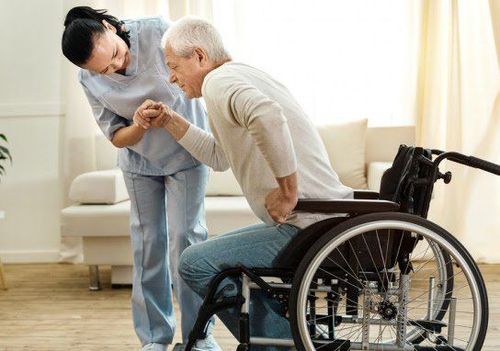
Phục hồi chức năng giúp người bị đột quỵ, liệt nửa người học lại các kỹ năng bị mất đột ngột khi một phần não bị tổn thương
2. A few things to remember about hand rehabilitation for patients with hemiplegia
Before restoring hand and hand function to patients with hemiplegia, it is necessary to assess the level of muscle strength according to the following scale to have an appropriate exercise plan:
0/5: Not moving 1/5 : Mild muscle twitching 2/5: Side-to-side movement, but unable to lift arm or leg against gravity 3/5: Able to move against gravity, but not against any any force, such as a slight push by a trainer episode 4/5: It is possible to move against a force, such as a push by a trainer, but not with the normal expected strength of 5/5: Can resist force with expected strength * Some things to remember when choosing exercise equipment to restore your health:
Choose a rehabilitation tool that you enjoy using. Doing this will make it easier for you to stick to your regimen. If you don't like rehabilitation, then you'll be more likely to give it up. Choose something that you can use consistently and over and over. Repetitive exercise is key to recovery. Choose equipment that is comfortable and easy to use. If a rehabilitation device causes pain or discomfort, you probably won't continue to use it. Therefore, it is most helpful to choose rehabilitation instruments that are simple, easy to use and do not cause irritation or pain to the body. Choose equipment that fits your budget.

Trước khi phục hồi tay và bàn tay cho bệnh nhân liệt nửa người cần đánh giá được mức độ sức mạnh cơ bắp để có kế hoạch tập phù hợp
3. Hand and hand exercise techniques for hemiplegic patients
Stroke rehabilitation for your hand and arm consists of passive movements or exercises which are movements done with the help of a therapist and more active exercises that you done with little or no help
Strengthening the muscles in your hands and arms will improve your grip and use of your limbs. Early arm exercises include holding the weak arm with your strong arm and swinging it back and forth. As you build strength and mobility, you can use a squash ball, wrist weights, or dumbbells to tone and build muscle
Fine motor skills are small, precise movements that you done with his hands and fingers. You can build this skill by tracing designs with a pen, shuffling cards, using a pin board, or picking up small peas and putting them in a cup. As with all rehabilitation exercises, repetition is important to help retrain your brain. You need to practice every day, just like you are learning to play the piano.
3.1. Hand exercise * Therapy ball exercise
Ball grip: Hold the ball firmly in the palm of your hand. Squeeze the ball, hold and relax. Repeat ten times, for two sets. Thumb dilation: Place the ball between the curved thumb and the two fingers of the same extended hand. Extend and straighten your thumb to roll the ball. Repeat ten times, for two sets. Pin: Hold the ball between your thumb and index and middle finger. Squeeze together, hold and relax. Repeat ten times, for two sets. Opposite: Place the ball in the palm of your hand, bringing the thumb towards the base of the little finger. Repeat ten times, for two sets. Side squeeze: Place the ball between any two fingers. Squeeze two fingers together, hold and release. Repeat ten times, for two sets. Expand: Place the ball on the table. Place the tips of your fingers on the ball and roll the ball out onto the table. Repeat ten times, for two sets. * Exercises with Putty
Putty is a therapeutic clay powder that is extremely useful for building strength and dexterity.
Wrap and separate: Wrap the putty around two fingers and try to separate the fingers. Repeat ten times, for two sets Finger press: Place putty in palm and press it with thumb towards base of little finger. Repeat ten times, for two sets Thumb Extension: Bend thumb and loop the clay around it. Try to straighten your thumb as if to simulate the “thumbs up” gesture. Repeat ten times, for two sets. Strengthen finger pinching: Squeeze putty between thumb and side of index finger. Repeat ten times, for two sets. Thumb squeeze: Keep fingers and thumb straight while pressing putty between index finger and thumb. Repeat ten times, for two sets. Pinch and pull: Using your thumb, index finger, and middle finger, pull the putty upwards. Repeat ten times, for two sets of Fingering: Place putty in the palm of your hand and press your fingers into a hook shape, trying to bend only the last two joints of your fingers. Repeat ten times, for two sets. Grasp, release: Place putty in the palm of your hand and make a fist while squeezing your fingers into the clay. Repeat ten times, for two sets. Finger pinch: Clip the putty between each finger and thumb. Repeat ten times for each finger, for two sets. Finger extension: Bend your finger and loop the putty around it. Try to straighten your fingers. Repeat ten times, for each finger for two sets. Finger Pull: Take a 1” diameter ball of putty and place it between your fingers. Squeeze and release. Repeat ten times, for each finger for two sets. Finger spread: Spread into a patty with putty dough over the fingers. Try to separate them. Repeat ten times, for two sets. * Exercises with everyday objects
Rolling motion: Place affected arm on a table and place a water bottle in the affected hand. Keep the affected hand and fingers relaxed. Curl your fingers and grab the water bottle then release. Repeat ten times, for two sets. Wrist flexion: Grasp the water bottle in the affected hand and use the unaffected hand to prop and support the affected arm. Let the wrists extend down, then roll the wrists up. Repeat ten times, for two sets. Wrist extension: Grasp the water bottle in the affected hand and use the unaffected hand to prop and support the affected arm. Place your hand with your palm facing down, then extend your wrist. Repeat ten times, for two sets. Pinch and release: Place the pen on the edge of the table, then gently hold the pen with the affected fingers. Slide the pen across the table, then release. Repeat ten times, for two sets. Rotate the pen: Place the pen on the table and use your thumb and fingers to rotate it. Try not to let the shoulders get involved in this exercise: the goal is to isolate the thumb and fingers. Aim for speed in this exercise, if possible, by rotating the pen quickly for 15 seconds. Coin Drop: Place 8 coins in a row on the affected palm. Then, slide a quarter down with your thumb and index finger. Pinch your penis with your index finger and thumb. Then, place one quarter down on the table while holding the other quarters in your hand with your other fingers. Repeat with the remaining quarters. Finger opposition: Bend affected arm, resting elbow on table. Bring the tip of your index finger to the tip of your thumb to form a ring. Pinch and release. Repeat with your middle, ring, and pinky fingers. Pinch and release. Perform with each finger, for two sets. * Some fine motor exercises
These exercises are recommended for stroke survivors who have good control over the movements of their hands and fingers. Exercises for this phase focus on challenging strength and coordination to tone the muscles and brain.
Repetitive finger tapping Move objects from fingertips to palm - as if you were picking up marbles one by one. Move objects from palm to fingertip. For example, pick up a coin from the palm of your hand to be able to place the coin in a vending machine. Move your index finger from side to side. Rotate objects - like rotating a dial on a watch Bring the tip of your thumb to the tip of your index finger. Work with picking and using smaller objects as with Beads, starting with the larger beads and working down to the smaller beads. Use a toothpick to push each one into the sponge. Turn nuts and bolts. Use tweezers to pick up items such as beads, fluff, or toothpicks. Pin the chip and place on a piece of cardboard or notebook. Knit or crochet. Clinch. Paint, draw or write. Shuffle or flip the cards.
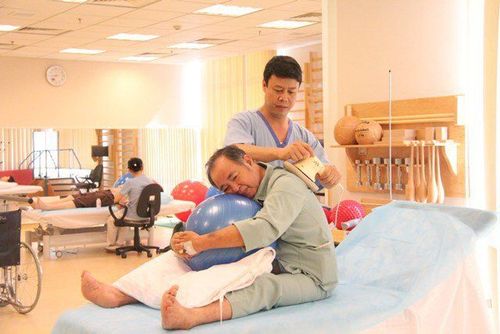
Phục hồi chức năng đột quỵ cho bàn tay và cánh tay của bệnh nhân liệt nửa người cần được thực hiện với sự trợ giúp của chuyên gia trị liệu
3.2. Arm and forearm exercises * Proximal movement
Sit at a table with elbows and forearms resting on the table, elbows bent and hands out in front of you. Make sure neither the chair nor the table have movable wheels. Without moving your arms across the table, bring your chest toward the table while sitting upright and tall. Then, move your chest away from the table and relax. Continue this sequence. Place both hands on a towel on the table. Reach your arms straight out in front of you, fully straighten your elbows, and lean forward slightly. Bring your hands towards your chest and return to an upright sitting position. Repeat this sequence. Repeat the same motion, sliding the arm slightly to the right. Repeat the same motion, sliding the arm slightly to the left. Place both hands on a towel on the table. Slide your hands forward until both elbows are straight. Now, slowly slide your hands from side to side, only going to that side about shoulder-width apart. Place both hands on a towel on the table. Make a small circle on the tabletop by hand sliding the towel. Make circles about as wide as your shoulders. * Distance movement
Place your affected hand in your unaffected hand. Move your arms forward to straighten your elbows, keeping your hands level with your shoulders or chest. Bring both hands back to the chest. Reset. With your elbows straight and your hands together, raise your arms to shoulder level or eye level. Say again. Keeping your elbows straight, reach your arms toward the floor with your knees. Repeat on the right knee, then on the left knee. Sit with your hands together on the same knee. Bring the back of your right hand to your right knee, then place the back of your left hand on your left knee, keeping your hands together. Say again. With your hands still intertwined, bring your hands to your left shoulder by bending your elbow, then to your right knee by straightening your elbow. Then reverse and bring your hands to your right shoulder, then to your left knee. Place your forearm on the table, raise your thumb, and bend your wrist to the left and then to the right. Place your forearm on the table, gently bend your fingers into your palm, then straighten your fingers. Holding the base of the thumb, gently rotate your thumb in a complete circle. Stroke recovery is a journey. It takes time and patience to regain skills and learn a new normal. But you can do it! Get started with a few exercises and activities that are right for your hand right now. Remember, our brains are amazing and continue to heal, learn, and grow. It takes time and consistent practice to maximize return of hand function. It's important to choose exercises that are difficult and fun to get the most out of your arm program.
Please dial HOTLINE for more information or register for an appointment HERE. Download MyVinmec app to make appointments faster and to manage your bookings easily.




